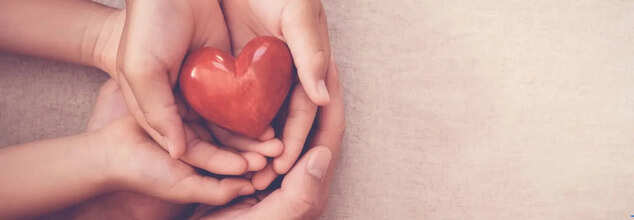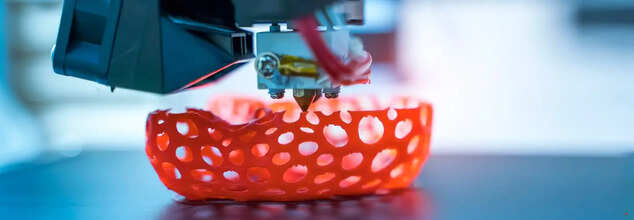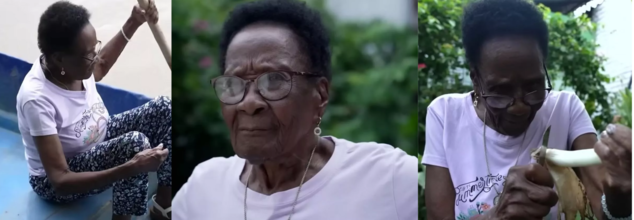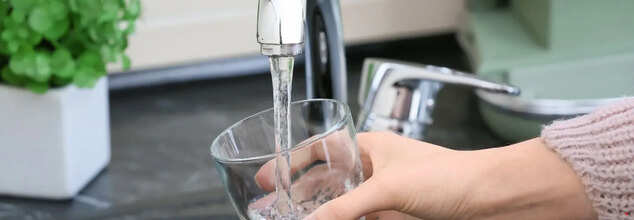- Health Conditions A-Z
- Health & Wellness
- Nutrition
- Fitness
- Health News
- Ayurveda
- Videos
- Medicine A-Z
- Parenting
- Web Stories

Credit: Canva
An Organ Donor Saves Three Lives-Read Her Heroic Story
One organ donor can save eight lives—and recently, this life-saving truth was reinforced by a powerful act of generosity. A 71-year-old woman from Delhi, Surinder Kaur, gave a new lease of life to three individuals waiting for critical organ transplants. Declared brain dead at Max Super Speciality Hospital, Saket, due to a brain haemorrhage, her family made the decision to donate her organs, including both kidneys and liver.
Following the family’s consent, a team of doctors at the hospital successfully harvested her organs. Her donation benefited three individuals, each of whom had been waiting for a life-saving transplant. One of her kidneys was allocated to a 59-year-old patient with chronic kidney disease (CKD) who had been on the transplant waitlist since February 2020. The second kidney went to a 53-year-old CKD patient who registered for transplant in April 2025. The liver was transplanted into a 42-year-old patient suffering from end-stage liver disease, who had been waiting since January 2025.
Here Are Details Of Her Case
Dr. Mukesh Kumar, Director & Head of Neurology at Max Super Speciality Hospital, Saket, shared the details of the case. He said, "Kaur was brought in emergency with an altered level of consciousness, had multiple episodes of vomiting, uneasiness, and excessive sweating. After a thorough investigation, it was found that she had a balloon-like bulge in one of the blood vessels in the brain that was prone to rupture. The family was informed about the critical clinical condition and prognosis of the patient, and the urgent need for surgery under high-risk. During the procedure, her brain stopped responding, and she was then declared brain dead. After discussion and counselling, the family made the selfless, noble decision to donate her organs. Through this noble act, she will continue to live on, bringing hope and life to others in need."
"With countless patients awaiting kidney transplantation, this act of organ donation has provided a new lease of life to two families. Timely retrieval and transplant from brain-dead donors are crucial, and this selfless gesture highlights the urgent need for awareness and action in organ donation," Dr. Anant Kumar, Chairman, Urology and Kidney Transplant, Max Super Speciality Hospital, Saket, added.
Here Are Rules Of Organ Donation In India
- Age Limit: Anyone above 18 can register as an organ donor.
- Consent: Consent from the donor or family is mandatory.
- Brain Death Certification: Organ donation after death requires certified brain death by a panel of doctors.
- No Commercial Involvement: Organ trade is illegal; donations must be altruistic.
- Living Donation: Only close relatives can donate organs while alive, with proper authorisation.
- Medical Suitability: Donors must be medically evaluated for suitability.
- Registration: Individuals can register via official organ donation platforms like NOTTO (National Organ & Tissue Transplant Organisation).

Credit: Canva
Could 3D Printing End the Organ Shortage Crisis?
Each year, hundreds of people around the world lose their lives waiting for a life-saving organ transplant. The demand for organs far outweighs the supply, leaving many patients with little hope. But what if we could print organs—tailor-made for each patient—using their own cells? While we're not quite there yet, researchers are making significant strides in this futuristic field known as 3d bioprinting.
Though the technology is still far from clinical trials, scientists believe that when 3d-printed organs become a medical reality, the process will likely involve a blend of cutting-edge imaging, personalised cell harvesting, and highly advanced bioprinting methods. Here's what this groundbreaking process could look like.
Step 1: Creating a Personalised 3D Model
To print a functional organ, the process begins with creating a precise 3D blueprint. While generic models can serve as a starting point, personalisation is key. Using imaging technologies like MRI (Magnetic Resonance Imaging) and CT (Computed Tomography) scans, medical professionals can generate a detailed digital model of the organ tailored specifically to the patient’s anatomy. This personalized design enhances the chances of a successful transplant by ensuring the printed organ will fit and function properly in the recipient’s body.
Step 2: Collecting Patient’s Cells And Preparing Bioink
One of the biggest hurdles in organ transplantation is rejection, which happens when the recipient’s immune system attacks the new organ. To reduce this risk, scientists aim to use the patient’s own cells to build the organ. These cells are harvested, cultivated in labs, and combined with a specially designed “bioink”—a gel-like substance engineered to mimic the structure of natural tissues. This bioink becomes the medium through which living cells can be precisely layered and formed into complex biological structures.
Step 3: Printing the Organ
With a personalized 3D model in hand and a supply of bioink rich in the patient’s cells, the actual printing process begins. The organ is built layer by layer, using bioprinters designed to handle delicate biological material. Some methods involve extrusion-based bioprinting, which pushes the bioink through a nozzle to form a structure, similar to how icing is piped onto a cake. Other techniques rely on light-based bioprinting, which uses beams of light to shape the biomaterial with incredible precision.
In some cases, additional cells may be added to the organ after printing to support its development or enhance functionality. Although the exact tools and materials are still being refined, technologies such as the BIO X, BIO X6, and LUMEN X are among those helping to push the boundaries of what’s possible in tissue engineering.
Road Ahead
While researchers are still navigating numerous scientific and ethical challenges, the vision of printing fully functional, transplantable organs is no longer science fiction. With continued innovation and global collaboration, 3D bioprinting could one day eliminate organ shortages altogether, saving countless lives and revolutionizing modern medicine.

Credits: Youtube
123-Year-Old Woman Credits Two Everyday Foods Behind Her Unbelievable Longevity
In a world where superfoods, supplements, and scientific advances define the health discourse, María Antonia Cuero's story shines for its elegant simplicity. At 123, María is officially the world's oldest living human—informally surpassing the Guinness World Record holder, France's Jeanne Louise Calment, who reached 122 years of age. Though her age remains in process of verification, the insights she offers are incontrovertibly priceless and scientifically validated.
Born on October 18, 1901, in Colombia, María has witnessed two world wars, numerous technological revolutions, and the dawn of modern medicine. Yet when asked what the secret to her remarkable longevity is, María doesn't refer to a magic pill or a genetic mutation. Rather, she attributes her longevity to two humble foods: fish and bananas—cornerstones of her daily diet, steeped in her coastal upbringing.
Growing up in a big family of 10 siblings by the Mayorquín River, María spent her days surrounded by nature. With fresh fish and tropical fruits readily available, her childhood diet was both organic and full of nutrients—years before these words became health buzzwords. Throughout the decades, she also raised eight children and is now the proud matriarch to 26 grandchildren, 24 great-grandchildren, and 54 great-great-grandchildren.
Although not officially documented by the Guinness World Records, María's identification card in 2012 indicates her birth as October 1901. She became the oldest to get vaccinated in March 2021, at 119 years old, marking yet another incredible achievement to her name.
However, aside from age and figures, it is María's way of living and attitude that provide deep insights into longevity.
Maria's Mindset and Philosophy of Longevity
In an interview on the Colombian television show Los Informantes, María discussed her philosophy of life: laugh frequently, don't worry excessively, remain active, and don't sit around too much. In her opinion, physical activity is essential. Her regimen included walking often, swimming, rowing, and being outdoors—long before fitness monitors or gym memberships were the rage.
These principles echo research in contemporary gerontology. Many studies identify an active life and good social relationships with a lower risk of chronic disease and longer lifespan. María's case supports that emotional well-being, combined with activity, is significant in healthy aging.
Fish
Of all the foods that she ate, fish is what María puts so much stress on. Living next to the river as a child, not only was she afforded the fresh catches each day, but she fished herself very frequently. "Good fish. I would fry the fish and then mix it with coconut and rice," she shared with a journalist.
Fish is a good source of high-quality protein, omega-3 fatty acids, vitamins D and B2 (riboflavin), and minerals like calcium, phosphorus, iron, zinc, iodine, magnesium, and potassium. Omega-3s in oily fish, particularly docosahexaenoic acid (DHA), are recognized to lower inflammation, maintain brain health, and decrease the risk of heart disease.
Scientific studies in the Journal of the American Medical Association have indicated that individuals with high levels of omega-3s live as much as 2.5 years longer on average. Another significant study identified a 40% lower risk of coronary heart disease mortality in those who ate regularly from fish with high levels of omega-3s, a figure further supported by the British Heart Foundation.
Bananas
María's second pillar of diet? Bananas—the smaller, sweeter bocadillo bananas (also referred to as sugar bananas or lady finger bananas). These bite-sized fruits are not only tasty but are full of fiber, antioxidants, potassium, and vital vitamins.
Bananas have been valued for centuries for their digestive and cardiovascular benefits. They help to control blood pressure, balance body fluids, and repair muscle and nerve tissue—all highly beneficial for elderly populations. The tryptophan and vitamin B6 contained in bananas also assist with serotonin formation, the "feel-good" neurotransmitter that enhances emotional well-being.
For María, these bananas were an everyday treat. And as science indicates, eating bananas on a regular basis can help with heart health, boost mood, and assist with muscle recovery.
What We Can Learn From Her Habit?
María's remarkable life is not merely about what she ate—it's about the regularity with which she lived. Her life was based on balance: a modest diet, regular exercise, a positive attitude, and close family ties. To this day, she radiates resilience. When asked what she is afraid of, her answer was moving: "I am not afraid of anything anymore."
This lack of fear and deeply ingrained calmness may also have protective health benefits. Studies have linked chronic stress to increased inflammation and a heightened risk of age-related diseases. María’s philosophy—“don’t worry too much”—may offer more protection than we’ve previously realized.
As the world population ages, María Antonia Cuero's life is an eloquent reminder: the route to longevity may not come in the form of costly therapies, restrictive eating, or vigilant self-tracking. It may sometimes be found in age-old secrets—eat fresh, move frequently, laugh without restraint, and enjoy the little things.
As we wait for official verification of her record-setting age, her legacy already walks tall as an example of how simplicity, persistence, and culture can overcome and thrive. In a world filled with constantly changing health fads, María's legacy encourages us to stop for a moment and ask—what really counts when it comes to living a long, healthy life?

Credit: Canva
Could Microplastics Be Clogging Your Arteries? This Simple Trick Can Help You Get Rid Of Them In Drinking Water
Microplastics—those invisible particles of plastic pollution—may be doing more than just contaminating the environment. According to recent findings presented at the American Heart Association (AHA), they could also be silently contributing to clogged arteries, potentially raising the risk of heart attacks and strokes.
In a study that’s turning heads in the medical community, researchers discovered that fatty plaques found in neck arteries—known as carotid arteries—contained over 50 times more microplastic content compared to plaque-free arteries. Even more concerning, these microplastic concentrations were found to be significantly higher in individuals who had already suffered from a stroke, mini-stroke, or temporary vision loss caused by restricted blood flow.
What Exactly Are Microplastics?
Microplastics are extremely small particles—often less than five millimeters in size—created when larger pieces of plastic break down. They can enter the human body in multiple ways: through the air we breathe, the food we eat, and even skin contact. An even smaller subset, known as nanoplastics, measures under 1,000 nanometers and is completely invisible to the naked eye. Because of their minuscule size, these particles can infiltrate tissues, organs, and potentially disrupt biological functions.
The accumulation of microplastics in arterial plaques introduces a new dimension to the ongoing conversation about cardiovascular risk factors. While high cholesterol, smoking, and hypertension remain the usual suspects, environmental pollutants like microplastics are emerging as a stealthy but significant threat.
A Simple Solution In Your Kitchen?
Amid growing concerns about microplastic contamination, especially in drinking water, scientists have been working on practical ways to mitigate exposure. In 2024, a research team from Guangzhou Medical Centre made a breakthrough. They discovered that a common household activity—boiling water—can significantly reduce microplastic content in tap water.
According to the team, combining boiling with basic filtration can remove up to 90% of nanoplastic and microplastic particles (NMPs) from household water. However, the method’s effectiveness varied depending on the type of water used. In areas where tap water contains higher mineral content, commonly referred to as "hard water," the technique proved especially efficient.
The secret lies in limescale. As hard water is heated, it forms limescale—a chalky white substance—which appears to create a sticky layer that traps microplastic fragments. Researchers found this natural process enhanced the removal of plastic particles from water, offering a practical and affordable solution for most households.
While more research is needed to fully understand the long-term health effects of microplastics, early evidence suggests they may be more dangerous than previously thought—especially for cardiovascular health. Taking simple precautions, such as boiling and filtering drinking water, could help reduce exposure and offer a small but meaningful step toward safeguarding your heart and overall well-being.
© 2024 Bennett, Coleman & Company Limited

